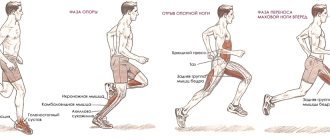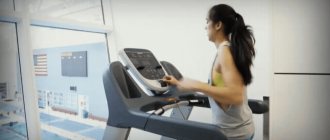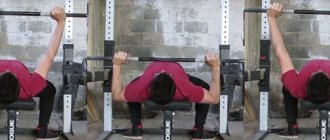Shuttle running is running at speed for short periods in two directions several times. The length of the segments varies, but the sum rarely exceeds 80-120 meters. Shuttle running is an integral part of the training of athletes from team sports: football, hockey, basketball, volleyball, handball, mini-football and others, that is, those sports where speed, agility and good coordination play an important role in achieving results. This type of running has also become widespread in some areas of fitness, including CrossFit.
Introduction to shuttle running
The word "shuttle" is often used to refer to the part of a sewing machine to which the thread is attached. She also goes down, threading the thread through the fabric. Thanks to this invention, the manual labor of creating, for example, clothing has become fully automated.
Shuttle running gets its name from the constant change of direction. Usually this is running back and forth between two points. More often they start from point A, run to point B, turn around there (around point B) and run back to point A. During one race, athletes move from A to B up to 10 times.
Today, shuttle running is a type of training, a type of running that anyone can practice.
Shuttle running: how to run 3x10 and 10x10 correctly, execution technique
Shuttle running is running at speed for short periods in two directions several times. The length of the segments varies, but the sum rarely exceeds 80-120 meters. Shuttle running is an integral part of the training of athletes from team sports: football, hockey, basketball, volleyball, handball, mini-football and others, that is, those sports where speed, agility and good coordination play an important role in achieving results. This type of running has also become widespread in some areas of fitness, including CrossFit.
Mistakes during training
The most common typical mistakes are made by novice athletes, and most often over long distances. They are:
- No warm-up. This significantly, almost by a third, reduces the efficiency and effectiveness of shuttle running.
- Incorrect calculation of your strength, endurance and load. Let’s repeat – we perform the first part at an average pace, and then gradually increase the intensity of the movement.
- There is no need to start with heavy loads - even for trained athletes. For beginners, low-intensity cardio is generally recommended, for example, shuttle running 3x10 or 4x9. Choosing large-volume loads at once can cause irreparable harm to the body.
- Incorrect choice of breathing technique and frequency. To run a shuttle, you need to breathe in a 2 by 2 mode, that is, while inhaling, you need to take two steps and in the same way while exhaling.
Common mistakes
Many beginners cannot get the maximum benefit from running because they encounter the following mistakes:
- They don't warm up properly. This exercise involves the work of simply a huge number of joints, muscles and ligaments.
- Incorrect distribution of the entire load. To avoid a lack of endurance after half the distance, you should start jogging at an average pace and gradually increase it, using the explosive power of the muscles of the limbs.
- Very slow stop before turning around. For a correct turn, there is no need to reduce the intensity, it must be done sharply, this way the speed will be the same and the inertia will be maintained.
- Overloading. When performing such high-intensity cardio exercises, it is important to monitor your training volume, as this can have serious negative consequences.
It has been proven that this running helps professional athletes improve their performance and skills, and also improves the physical fitness of amateurs. In addition, it gives a charge of vivacity and a great mood.
Basic beginner mistakes
A little later we will look at the benefits of shuttle running for the body and whether harm is possible, and now we will look at the main mistakes that almost all beginners in this sport make:
- Never start learning to run at high speeds right away;
- First of all, learn to control speed changes;
- Learn to move correctly when starting and turning;
- Don't forget to warm up before starting your workout. All muscles must be thoroughly warmed up to avoid sprains and injuries.
- Remember the rule with which you will understand how to quickly run the 10x10 shuttle run: the tips boil down to one recommendation - first master the correct execution technique, and then begin to increase speed results. And nothing else!!!
Improving results
You can improve your shuttle running results by following a number of recommendations. The following will help optimize your existing base:
- Performing a warm-up aimed at warming up and increasing the elasticity of muscles and ligaments. Ignoring this rule can lead to injury to the calf muscles.
- Regular training.
- Performing stretching. Increases muscle endurance and strength.
Thus, shuttle running develops the skills necessary for various sports. Its benefits are obvious - it makes it possible to increase muscle tone, improve coordination, reduce subcutaneous fat, strengthen the cardiovascular, respiratory systems and the body as a whole.
Shuttle running options
There are 2 classifications of shuttle running:
- depending on the number of specified intervals;
- and depending on the method of reversal.
The number of intervals usually varies from 3 to 10.
There are 4 main ways to turn:
- Classic 180 degree turn;
- Turn 180 degrees and touch the floor;
- Shuttle running with moving objects (usually wooden blocks or cubes) from point A to point B;
- Shuttle running without turning 180 degrees, when every second interval of the distance the athlete runs backwards.
A classic turn and a turn with touching the floor are not much different from each other, since their only difference is the pre-agreed condition - to touch the surface, which, by the way, sometimes athletes do during a classic turn, so as not to lose their balance.
Shuttle running with moving objects from point A to point B is a kind of relay race with one participant, where the role of the relay baton is most often played by small wooden blocks that initially lie at point A. Their number usually varies in the range of 3-5 pieces.
An example in video format with a baton.
Shuttle running without a turn is the simplest type of this exercise, from the point of view of coordination, but at the same time it puts more strain on the knee and ankle joints than others, since as the athlete reaches point B, the athlete has to reduce speed solely by braking, and not by entering a turn.
In addition, variations in the length of the segments are possible. The most common intervals for shuttle running are 10, 15 and 20 meters.
Standards
It is worth noting that the standards for 10x10 shuttle running are different for each category of citizens. Standards have been developed for students of schools, universities and military personnel depending on gender and age.
| Name of exercises | Up to 25 years | From 26 to 30 years old | From 31 to 35 years old | From 36 to 40 years | From 41 to 45 years old | From 46 to 50 years | From 51 to 55 years old | 56 years and older |
| Shuttle run 10*10 m (sec.) | 28,8 | 29,6 | 30,3 | 30,8 | 31,6 | 34,2 | 38,2 | 41,2 |
Technique for performing shuttle running in stages
As we mentioned, shuttle running includes 4 stages. Each of them has its own subtleties, and if you understand them, then the effectiveness of your training will be maximum. The presented algorithm applies to people with traditional right-sided motor skills. Lefties can do everything in mirror mode.
Stage 1. Start
- The position is performed from a high start. The supporting leg is in front, the center of gravity is shifted to it. The maximum tension falls on the quadriceps.
- The body is tilted forward, arms are bent at the ribs, the back is straight. The start is explosive, which is facilitated by well-developed leg muscles.
Stage 2. Race of the first segment
The first part of the distance must be run quickly, so landing only on the toe, and not on the entire foot, is used. The movements are springy and uniform.
Stage 3. Turn 180 degrees
Performed in the following algorithm:
- a meter before the turn the speed drops sharply;
- a stopping step is performed when the foot of the leg that is in front is placed at 90 degrees and then a turn is performed the remaining 90 degrees - this technique maintains the inertia of movement and ensures a quick increase in speed for the next segment.
Stage 4. Finishing
It is customary to make a final push, that is, the speed of movement should increase until the very finish line, and then gradually slow down.
A video of shuttle running will help you learn how to run shuttle running correctly.
Sources
- https://FitNavigator.ru/kardio/chelnochnyj-beg.html
- https://www.fitnessera.ru/texnika-vypolneniya-chelnochnogo-bega-i-interesnye-fakty-o-ego-polze.html
- https://voen-pravo.ru/34-5/
- https://nasporte.guru/legkaya-atletika/tehnika-i-pravila-vypolneniya-chelnochnogo-bega-3h10.html
- https://trenirofka.ru/vidy-trenirovok/kardio/chelnochnyy-beg.html
- https://GTOnorm.ru/chelnochnyj-beg-tehnika-vypolneniya/
- https://BegBega.ru/chelnochnyj-beg-10h10-tehnika
- https://bodybuilding-and-fitness.ru/kardio/beg/chelnochnyj.html
- https://keeprun.ru/types/chelnochnyj-beg-texnika-vypolneniya-pravila-i-normativy.html
- https://beguza.ru/chelnochnyj-beg/
- https://kakbegat.com/33-chelnochnyy-beg.html
“Reinforcing the shuttle running technique” lesson plan in physical education (2nd grade) on the topic
Lesson topic: “Reinforcing the shuttle running technique”
(Physical education lesson in second grade, athletics section.)
Didactic goal: repetition of the concept of “shuttle running”.
Activity goal: consolidation of the technique of performing shuttle running 3X10 meters.
Objectives: - Form universal learning activities (UAL);
— Develop physical qualities: speed, agility, flexibility;
— Cultivate purposefulness, attentiveness, goodwill.
Lesson type: lesson with an educational and training orientation, solving specific problems.
Theoretical and methodological basis: system-activity approach.
Teaching methods: problem-dialogical, explanatory - illustrative.
Form of training: frontal, flow-group.
Planned educational results:
Subject (scope of mastery and level of competency):
They will learn to: explain in an accessible form the technique of performing shuttle running; analyze and find errors when performing motor actions and correct them effectively;
They will have the opportunity to learn: to observe the rules of safe behavior in the gym while performing physical exercises and outdoor games; mobilize your personal and physical resources, distinguish between basic physical qualities.
Meta-subject (acquired competence):
Cognitive - master the ability to understand the educational task of the lesson and strive to fulfill it; anwser the questions; generalize your own idea; relate educational concepts to real-life examples;
Communicative – able to communicate and interact with peers on the principles of mutual respect and mutual assistance; negotiate and come to a common decision in joint gaming activities;
Regulatory – develop the ability to accept and maintain a learning task when performing physical exercises; make necessary adjustments to the activity after its completion based on its evaluation and taking into account the nature of the errors made.
Personal: developing a respectful attitude towards the opinions of other people; acceptance and mastery of the social role of the student; development of motives for educational activities and the formation of personal meaning of learning.
Equipment: signal cones, stopwatch.
1).Organizational stage.
The goal of the stage: conscious entry of students into the space of learning activities in the lesson. Emotional, psychological and motivational preparation of students for work in the classroom.
(Students enter the gym, stand in a line according to height)
Teacher: Class, be equal! Attention! Hello!
(Students answer in unison: Hello!)
Teacher: Pay in order!
(calculation is carried out in numerical order)
2).Setting the goals and objectives of the lesson.
Goal of the stage: Formulation with the help of the teacher of the purpose of the lesson, defining tasks to achieve the goal.
Teacher: Today we will continue to practice athletics. Last school year, you became acquainted with the concept of “shuttle running” and tried to learn how to perform it. This will be the topic of today’s lesson. Can you tell me what shuttle running is and why it has this name?
(Children answer with the help of the teacher: shuttle running is a continuous run of the same segment several times. It is called so because it resembles the movement of a shuttle in a loom)
Teacher: In first grade, did each of you manage to perform the shuttle run without errors? Have we sufficiently studied and understood the shuttle running technique?
(no, there were errors and difficulties)
Teacher: Let's try to formulate the purpose of the lesson.
(consolidating the shuttle running technique)
3).Updating knowledge.
The purpose of the stage: preparation and motivation of students for the proper implementation of educational activities.
Teacher: Can we start doing the shuttle run right now?
(no, you need to warm up first)
Teacher: Today we will do a warm-up using the game “Everyone in a Circle.”
(the teacher briefly reminds the rules of the game)
Teacher: Class, turn right! Follow the guide in a circle, march!
(Children follow the guide in a column one at a time around the perimeter of the hall until the moment when intervals of 1.5-2 m are formed between all students, necessary for safe running)
Teacher: Class, march lightly!
(p/i “Everyone in a circle”: Children run around the perimeter of the hall following the guide. At the teacher’s command, they complete the tasks: “Everyone in a circle!” - they run into the circle outlined in the middle of the hall; “Automatic burst!” - they crouch and cover their heads with their hands; “Hot floor!” - they jump onto some elevation (a gymnastic bench or the lower slats of a wall bars), trying not to touch the floor with anything; when the whistle blows, they change the direction of running. Players who complete the task incorrectly or later than everyone else perform five penalty push-ups from the floor or five squats of your choice. Commands are given in random order, after each task the children continue to run around the hall in a column in their places. The winners are the players who have never made a mistake. The game lasts approximately 3 minutes)
Teacher: Class, step up!
(recovery walking 30 sec.)
Teacher: Class, march in a column of four, stopping at landmarks!
(students line up in a column of four, stopping at the circles drawn on the floor to warm up on the spot. The teacher names and shows general development exercises (GDE), naming the starting positions (I.P.), counting, drawing students’ attention to synchronous, aesthetic , rhythmic or smooth execution of exercises, helping those students who have difficulty)
Teacher: Class, march into the column one by one, following the guiding step!
(students line up in a column one at a time and walk around the hall. The teacher shows which bench the boys sit on and which bench the girls sit on.)
Teacher: What difficulties did you have in first grade when doing the shuttle run, what didn’t work out?
(children's answers)
Teacher: Now I will remind you and show you the technique of performing a 3 x 10 m shuttle run, and after that you need to answer that in the name “3 x 10 m shuttle run” the numbers “3” and “10” mean.
(the teacher performs a 3x10m shuttle run, drawing students’ attention to body position when starting high, when running, when making turns)
Teacher: So what does the number “10” mean?
(distance from line to line – length of the segment covered)
Teacher: And the number “3”?
(number of times you need to run this segment continuously)
4). Consolidation and comprehension of previously studied material.
The purpose of the stage: performing a training action, followed by analysis of errors, if any.
Teacher: Now that you remember everything and know how to do the shuttle run, we are starting to start!
(the teacher names the names of 3-4 children in each race, approximately equal in level of physical fitness, first boys, then girls. After each race, the teacher, with the help of the children, sorts out mistakes, if there were any, explains the reasons for failure, notes successful students. If necessary individual students can repeat the race to reinforce the correct execution rather than the incorrect one)
Teacher: So, now I’m sure that you have all learned how to perform shuttle running correctly and quickly, well done! Tell me, how can you make this exercise more difficult?
(increase the number of segments, increase the length of the segment, perform the exercise for a while)
5).Inclusion in the knowledge system and repetition.
The purpose of the stage: identifying the limits of applicability of new knowledge, selecting and completing a game task in which a new method of action is provided as an intermediate step.
Teacher: What physical qualities develop when you do shuttle running?
(speed, dexterity)
Teacher: What moral and volitional qualities did you need to successfully complete it?
(purposefulness, perseverance, attentiveness)
Teacher: Okay, you named everything correctly! I suggest reinforcing the material you have learned with the help of a game.
(Students offer options for outdoor games, the teacher makes the final choice, reminds the main points and rules of the chosen game, pays attention to safety during the game (focus on the value of health).
(The p/i “Needle, thread, knot” is carried out: The playing children stand in a circle and join hands. Drivers are selected from the players: “needle”, “thread”, “knot”, they stand in the center of the circle one after another. To the leader's command, children standing in a circle raise their clasped hands up. The "needle" player tries to run away from the "thread" and the "knot", while he weaves between the players standing in a circle, runs through the circle and abruptly changes the direction of running. "Thread" and the “knot” must run through the same holes as the “needle.” The “needle” is considered the winner if in 30 seconds it manages to entangle the “thread” and the “knot.” Players standing in a circle must put their feet together and do not lower your hands while running “needles”, “threads” and “knots”, and those, in turn, should not grab with your hands those standing in a circle. During the change of players you need to lower and shake your hands.)
6).Results of the lesson. Reflection.
The purpose of the stage: recording the content studied in the lesson, reflection and self-assessment by students of their own educational activities.
Teacher: Class, stand in a line according to height! Be equal! Attention! During today's lesson, I saw how you tried to complete all the difficult tasks, that you like to be healthy, fast, agile, flexible, purposeful and attentive - this is wonderful! Let's remember what goal we set for ourselves at the beginning of the lesson? Have we achieved results? What is shuttle running?
(students' answers)
Teacher: What was the most difficult thing for you in the lesson? What did you like most? What worked best?
(students' answers)
Teacher: I wish you further success, Thank you for your efforts in the lesson. The lesson is over. Left! March to class!
(children leave the hall).
Distance running
After starting the shuttle run, it is necessary to set the maximum frequency of steps, which will allow you to gain speed in a minimum number of meters. The distance is covered on the toes, which is the correct technique in short-distance running.
Before making a turn, you must reduce your speed. Moreover, the shorter the distance required to reduce speed, the better.
An important feature of the shuttle is the stopping step, which is performed when turning at the end of the segment. Improper execution of this technical element may result in injury.
Therefore, warm up actively.
During a stopping step, the swing leg is brought forward, the foot turns horizontally in relation to the shin. This action helps maintain balance when turning.
After the stopping step, you need to make a 180 degree turn. The first running step is performed with the stopping foot. In this case, repulsion occurs due to the pushing force of the supporting leg. The stopping step is often used by football players when the direction of the ball or attack suddenly changes.
An important point is to prevent unnecessary actions when turning. For example, touching a line and rotating are performed simultaneously. If you perform these actions separately, you can lose seconds.
Shuttle race finish
The final part of the shuttle race is finishing. This phase is technically no different from the finish of a sprint. Here you can also use tricks that can improve your results at the finish line. For example, a chest forward throw or a shoulder lunge.
The difference between the final part of the shuttle is that when finishing, the line does not touch and there is no need to reduce speed. On the contrary, you need to gain maximum speed and finish.
Running technique
Despite the simplicity and accessibility of running, people over thirty years of age need to pay special attention to the correct technique. After 30, and further with age, the condition of bone tissue and the elasticity of ligaments and joints deteriorate, which can lead to injuries
First of all, you need to know how to run correctly; running technique should help improve your results and not harm your health. Don't train too often; your muscles need time to recover. It is optimal to train every 1-2 days. The workout should begin with a warm-up and end with muscle stretching.
Do not forget that for the desired result it is important to understand how to run correctly; running technique must improve every time
To improve the quality of shuttle running, the following conditions should be met:
- at the start, make a small lunge forward with your pushing leg in order to react on command and perform maximum acceleration;
- you need to run on your toes to reduce the load on your knee joints;
- correct running should be accompanied by a slight tilt of the body forward, and in no case should you tilt your back back. This will not only shorten the running time, but also injure the spine, including the cervical spine;
- as you approach the end of the distance, you need to start turning sideways about a meter before the stripe, lunge with your foot and touch the floor, push off easily without wasting time and run further;
- to speed up your running, your arm technique should also help speed up. Elbows should be bent and fingers flexed. Hands should move alternately, changing position as quickly as possible, helping the legs to accelerate at the same time;
- breathing should be chest. Inhale sharply through the nose, exhale more slowly through the mouth. Let your breathing match the rhythm of your body's movement. It is strictly forbidden to hold your breath.
Features of the technology
There are often cases when it is easier for athletes to run a hundred meters than to perform a 3x10 shuttle run. This is due to the fundamentally different nature of the movements. If in the case of a 100-meter run an athlete always runs in one direction with maximum acceleration, then during a shuttle run he needs to accelerate, brake, most often touching the ground, turn 180 degrees and perform the same procedure a few more times. once. This type of load exhausts the muscles and the body as a whole much faster. Therefore, when shuttle running, it is important to pay great attention to technique , be it performing 3x10 or 10x10 intervals.
Before performing the actual workout, it is important to do a full warm-up, focusing on the knee and ankle joints, injuries to which are most common during shuttle running. The warm-up should include as many rotational movements as possible to prepare the ligaments and joints for the work ahead.
Features of shuttle running
You may ask why run like a shuttle if there are interval races and jogging. We will explain: these are different types of load. Here's what happens during a shuttle run:
- You start like a sprinter, developing maximum speed in the first seconds. And so, as soon as you have developed this speed, you run up to the turning point. You need to try, without slowing down, once. But inertia will not let you do this, believe me.
- Typically, at the turning point you need to touch the floor or some flag, or move an object. In this case, all this is called shuttle running with the transfer of 2-3 objects. You understand that maintaining speed in this case is unrealistic, because you need to stop, change direction 180 degrees and accelerate again.
- And so, you change the speed, accelerate, and again at the starting point you need to brake.
So you are like a shuttle running back and forth. This is a complex exercise that develops coordination, speed, sense of balance and motor skills of the body muscles. All this is necessary for any ball game, hockey, martial arts.
Examples of training using shuttle running
Shuttle running can be done both independently and as part of complex training. With its help, you can diversify the program and increase the efficiency of the load. Below are workouts for athletes with different levels of training.
- 200 meter race, 10 push-ups, 3x20 shuttle run. Only 3 cycles.
- Push-ups – 30 times, 20 squats, jumping rope – 60 seconds, shuttle run – 5x10. Three cycles.
- Pull-ups – 30 times, push-ups – 10 reps, 40 push-ups, shuttle run 20x4. 2 cycles.
In this case, the exercises can be supplemented by carrying objects during shuttle running.
Types of shuttle running
This exercise is auxiliary in the course of physical education classes at school; it allows both physical training of the schoolchildren’s body and instilling the necessary motor coordination skills.
Shuttle run 3x10 execution technique
The school curriculum provides for the implementation of the 3x10 standard starting from the 4th grade.
To complete it, as a rule, a high start is chosen, implementation is carried out by 3-4 students at the same time, this method allows you to interest students in better fulfillment of the standard.
The exercise can be performed both outdoors and indoors. When several students fulfill the standard, treadmills must be marked for each participant.
Before the start, participants take the starting position, while the toe of the foot should be near the line, without stepping into the distance. After the “March” command, acceleration, running the distance, braking, touching the line or stepping and turning are carried out, followed by the start of the next stage.
After the last turn, the finishing segment is completed at the maximum pace. The end of the exercise is considered to be crossing the finish line by any part of the body.
Other types of shuttle running
For different age groups and categories, different standards and exercise conditions have been developed and applied, for example, in addition to running 3*10, students can, depending on age, have standards of 4*9, 5*10, 3*9.
For older ages, for example, students, people in whose professional activities physical fitness is one of the main criteria for professional fitness, for example, firefighters, police officers, rescuers, there are exercises in running 10x10 meters.
For such types, there are more stringent compliance standards.
Preparation for delivery
Preparation begins with warming up the muscles - jogging at a calm pace, stretching exercises, practicing acceleration techniques.
Quick turn training:
- turns over a short distance (5 m), while running should be leisurely;
- moving within 10 meters with sharp braking and turning;
- increasing the distance - the first segment is 5 meters, the second is 10 meters, the third is 15 meters.
At the end of your runs, it is recommended to:
- burpees;
- jump rope;
- stepping onto a pedestal;
- jumping onto the platform.











